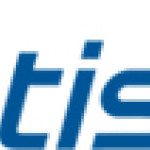- 産業: Telecommunications
- Number of terms: 29235
- Number of blossaries: 0
- Company Profile:
ATIS is the leading technical planning and standards development organization committed to the rapid development of global, market-driven standards for the information, entertainment and communications industry.
A two-way circuit using two paths so arranged that the respective signals are transmitted in one direction only by one path and in the other direction by the other path. Note: The four-wire circuit gets its name from the fact that, historically, two conductors were used in each of two directions for full-duplex operation. The name may still be applied, e.g., to a communications link supported by optical fibers, even though only one fiber is required for transmission in each direction.
Industry:Telecommunications
A type of AllCall registration feature, the use of which combines the registrations for incoming and outgoing calls for the current terminal address in a single procedure. However, unlike AllCall registration, a linked registration cannot be overridden in all or in part by: (a) InCall, remote InCall, AllCall, or remote AllCall registrations by the same UPT (Universal Personal Telecommunications service) user; (b) OutCall, remote OutCall, AllCall, remote AllCall, linked, or remote linked registrations by other UPT users. The UPT user must explicitly deregister a linked registration or override it by another linked or remote linked registration.
Industry:Telecommunications
A type of analog voicegrade access line signaling that requires the customer interface (CI) to provide a ground on the ring conductor at the network interface (NI) to initiate service requests.
Industry:Telecommunications
A type of bayonet (twist-lock) coaxial connector commonly used in applications involving small (e.g., RG-59, RG-62) coaxial cables.
Industry:Telecommunications
A type of delta modulation in which the size of the steps of the approximated signal is progressively increased or decreased as required to make the approximated signal closely match the input analog wave.
Industry:Telecommunications
A type of error-correction code in which (a) each m-bit information symbol (each m-bit string) to be encoded is transformed into an n-bit symbol, where n>m and (b) the transformation is a function of the last k information symbols, where k is the constraint length of the code. Note: Convolutional codes are often used to improve the performance of radio and satellite links.
Industry:Telecommunications
A type of firewall in which each packet is examined and either allowed to pass through or is rejected, based on local security policy.
Industry:Telecommunications
A type of information-retrieval service in which a subscriber can (a) access a remote database via a common carrier channel, (b) request data, and (c) receive requested data on a video display over a separate channel. Note: The access, request, and reception are usually via common carrier broadcast channels.
Industry:Telecommunications
A type of network element (NE) that contains a DUA (directory user agent,) an optional local cache, and possibly other application processes such as the registration agent. The R-NE communicates with the DSA (directory system agent) via the DAP (directory access protocol. )
Industry:Telecommunications
A type of one-way information service in which a subscriber can receive data on a video display. Note: The information is transmitted to the subscriber's video display over a common carrier channel. A proprietary video adapter unit is required for reception. Contrast with viewdata.
Industry:Telecommunications
